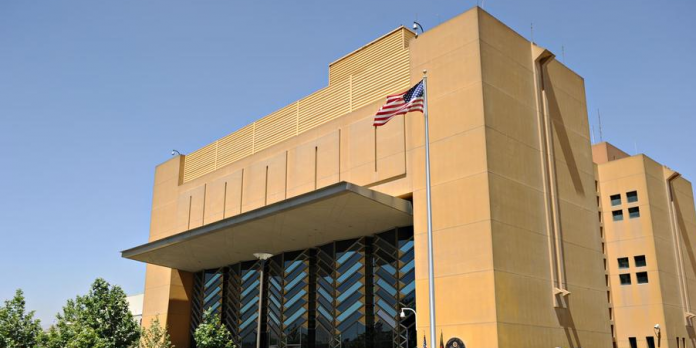NEW YORK, A leading American newspaper said in a report from Kabul Sunday that U.S. diplomats and aid workers in Afghanistan were facing serious challenges following the conclusion of the Pentagon’s two-decade mission in the strife-torn country as troop withdrawal nears completion.
“In the absence of a military complement in Kabul, the task of the U.S. Embassy is made infinitely more complex, dangerous and difficult,” Hugo Llorens, who served as the top U.S. diplomat in Afghanistan under presidents Barack Obama and Donald Trump, was quoted as saying by The Washington Post.
Citing current and former officials, the Post described an array of obstacles that a shrinking cadre of civilians in the bunkered U.S. Embassy in Kabul must navigate, with the coronavirus pandemic and the specter of a possible diplomatic evacuation compounding the significant difficulties inherent to working in Afghanistan.
The diplomatic challenges have come into focus after President Joe Biden’s decision to withdraw U.S. forces by the end of August, a move the newspaper said has “emboldened the Taliban, which has intensified its campaign to retake lost ground, and deepened fears that the Kabul government could collapse.”
Already a growing list of countries, including France and China, have evacuated their citizens from Afghanistan, it said, adding that peace talks between the Taliban and Afghan government show few signs of progress.
Biden this month defended his decision, saying Afghans must now defend their country themselves. He also vowed that the United States would not abandon Afghanistan, making the diplomatic and aid mission — in particular, U.S. support for local security forces and the plight of women and girls — a central test of the president’s strategy.
“The complexity of the operations in Afghanistan are orders of magnitude greater than virtually anywhere else,” said a former senior official` who the Post described as a person with knowledge of the mission in Afghanistan.
“In the 20 years since the United States launched its first airstrikes in Afghanistan, the work of the State Department, U.S. Agency for International Development (USAID) and other civilian agencies has been largely overshadowed by the military mission, massively larger in scale, manpower and funding,” the Post said.
At the height of the “civilian surge” that accompanied Obama’s troop increase in 2010, aid workers and diplomats were arrayed at consulates and outposts across the country in an effort to lay the conditions for lasting security gains, according to the report.
Even after that high-water mark, it said, diplomats in Kabul benefited from the network of military bases and the presence of military aircraft, both enabling more frequent visits to far-flung outposts to review conditions on the ground and providing an additional channel of information from troops in the field.
The U.S. nation-building effort, which once included ambitious plans to modernize infrastructure and transform the country’s economy, is littered with examples of failure, the report said.
Citing the Special Inspector General for Afghanistan Reconstruction, an independent oversight entity established by Congress, the Post said at least $19 billion of the $134 billion American taxpayers spent on security, development and humanitarian aid since 2002 was lost due to waste, fraud and abuse — and potentially much more.
The assistance also contributed to major improvements for Afghans, including substantial reductions in infant and child mortality, and an increase in female life expectancy from 47 to over 60 years, according to the report.
“Today, diplomats and aid workers operate out of the hulking embassy complex in Kabul, located at the edge of a fortified diplomatic and government zone,” the Post said. The embassy is a city unto itself, with offices, apartments, dining and workout facilities where some 1,400 Americans, part of a total workforce of 4,000, are confined for months a time, it was pointed out.
The military departure means reduced mobility for officials overseeing an assistance portfolio that made Afghanistan the largest recipient of U.S. aid in 2019, according to Concern Worldwide. USAID expects to spend up to $500 million on Afghanistan assistance in 2021.
Patricia Gossman, associate Asia director at Human Rights Watch, was quoted assaying that Afghan women are in danger of losing the advances in freedom and education they have achieved since 2001. “If things return to an all-out civil war among militias and Taliban forces, we fear a repetition of the atrocities of the early ’90s,” she said.
Follow the PNI Facebook page for the latest news and updates.








